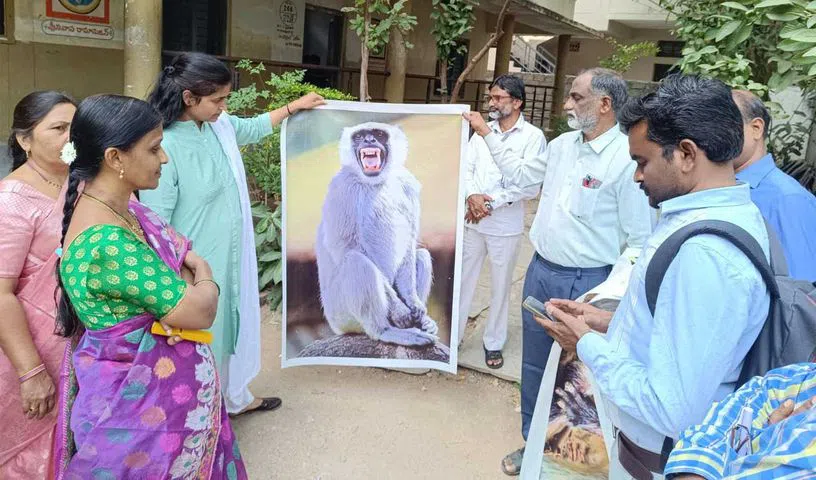Langur posters is Karimnagar Municipal Corporation’s solution to tackle monkey menace
Officials start distributing the posters to schools; arrangements also being made to catch monkeys and leave them in forest areas
Karimnagar: Monkey trouble? Bring in the langur!
The age-old myth that the common monkeys (rhesus macaque) are afraid of Indian Gray Langurs is being put to use by the Municipal Corporation of Karimnagar, which has struck upon the idea of distributing flex posters of langurs to all government schools.
Corporation officials took this decision in the wake of monkey attacks on schools and several instances of the simians creating terror among students. It may be recalled that a Class 8 student got both his legs fractured after he fell off the first floor of a school building. While students were returning to their classrooms after lunch, a bunch of monkeys had rushed towards them. Frightened by the sudden move, the boy jumped off the first floor of the Dhangarwadi school.
With monkeys threatening residents of the town, the authorities have decided to engage monkey catchers. They are also distributing flex posters of langurs to all schools. Residents in a few localities have also put up flex posters of langurs in front of their houses to scare the monkeys away. Municipal Commissioner Chahat Bajpai, who started the distribution of langur flex posters on Friday, said they would be supplied to all schools after Sankranti festival. Arrangements were also being made to catch monkeys and leave them in forest areas, she said.
Why the langur?
Sometimes referred to as the Hanuman langur, the Indian Gray Langur (semnopithecus entellus) is distinctly identified by its black face and ears, and a long tail. It is found commonly in India, Sri Lanka, Bangladesh and Pakistan. Over the years, the Gray Langur has become an invaluable asset to those disturbed by monkeys. Langurs are usually brought to areas troubled by the macaques. Their presence is believed to scare away the monkeys, with several places in New Delhi and Agra too adopting this method. Residential communities, farmhouses, and hospital establishments have also hired skilled langur handlers to keep monkeys away.
However, the practice has hit the langur population. Cramped in cages, tortured, and tamed, the langurs are often made to suffer. Following this, the Wildlife Crime Control Bureau imposed a ban on the use of langurs for such practices in 2012. The langur is also protected under the Wildlife (Protection) Act. They cannot be owned, sold, bought, traded or hired by anyone, with violation of the Act promising a penalty, three years in jail or both.
And that is why the Karimnagar corporation has turned to posters of langurs.








